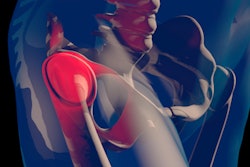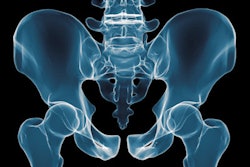
An updated edition of a clinical audit tool is to be published in January 2019, delegates learned at the European Society of Radiology (ESR) Annual Leadership Meeting, held in Berlin on 16 November.
"Audit is measuring what we do to meet a standard and seeing if we can bring ourselves closer to that standard," said Dr. Adrian Brady, chairman of the ESR Quality, Safety and Standards Committee, adding that the first edition of the booklet aimed to "help with audit in radiology practice."
 Dr. Adrian Brady from Cork.
Dr. Adrian Brady from Cork.The basic principle of audit is to select a topic, set a standard to meet, and collect relevant data to check whether you're meeting it. If you're not, you should implement change, and then repeat the audit, he added. This feedback process of measurement, change, and remeasurement is called the "audit cycle" or "helix."
The ESR Clinical Audit booklet, Esperanto, was first published in 2017. The goal was to help European radiologists carry out clinical audit in accordance with the European Council Basic Safety & Standards (BSS) Directive (2013/59/Euratom). Article 58e of the BSS Directive makes clinical audit compulsory in the EU in "accordance with national procedures."
The first edition outlined the principles of clinical audit and provided 17 templates to guide radiologists through audit in various situations, explained Brady, who is a consultant radiologist at Mercy University Hospital in Cork, Republic of Ireland. The expanded booklet will contain more templates separated into two groups. The original 17 templates, plus six new ones, cover activities that must be measured under the directive. Most of the material relates to radiation exposure.
Another seven templates will cover audit topics relating to service provision and clinical practice. These are not required to comply with legislation.
Looking ahead to ECR 2019
At the leadership meeting, Brady also reported on two surveys conducted by the ESR. A survey of EuroSafe Imaging Stars departments launched on 31 October 2018 aims to discover how many departments are meeting the directive requirements for audit and measurement.
A further poll of ESR national societies, launched on 8 November 2018, is examining how many countries have national-level support for clinical audit. "Some countries have none at all, and it's up to individual departments, while others have some support structures," he said.
Both surveys are expected to conclude in December, and the results will be presented at ECR 2019 in Vienna. ECR 2019 will feature three sessions on audit, he noted. One will present survey results, while a further session will cover uptake of clinical audit and supporting transposition of the directive into national law.
Additionally, a joint session with the ESR Subcommittee on Professional Issues and Economics in Radiology will guide radiologists on how to fulfil their professional and legal requirements around audit.
The Esperanto booklet was piloted in EuroSafe Imaging Stars hospitals between June and October 2017. Published on the ESR website in January 2018, it is freely available for download and use. The expanded booklet was developed under the direction of Prof. David Howlett, chairman of the Subcommittee on Audit and Standards.
Report on ESR journals
The ESR's three journals -- European Radiology, Insights into Imaging, and European Radiology Experimental -- are blooming, and overall they have had an increase of 35% in submissions during the past year, according to Dr. Regina Beets-Tan, chairwoman of the ESR Publication Committee and head of radiology at the Netherlands Cancer Institute in Amsterdam.
 Dr. Regina Beets-Tan from Amsterdam.
Dr. Regina Beets-Tan from Amsterdam.The emphasis is on an integrated approach, she said at the ESR leadership meeting. European Radiology focuses mostly on original research and outcome studies, and already in 2018 there have been 750,000 downloads and more than 3,300 submissions.
Insights into Imaging publishes ESR white papers, best practice guidelines, and other educational material. It is fully open access, and there have been more than 400,000 downloads so far this year. European Radiology Experimental was launched in June 2017, and 75,000 downloads have been made in 2018.



















